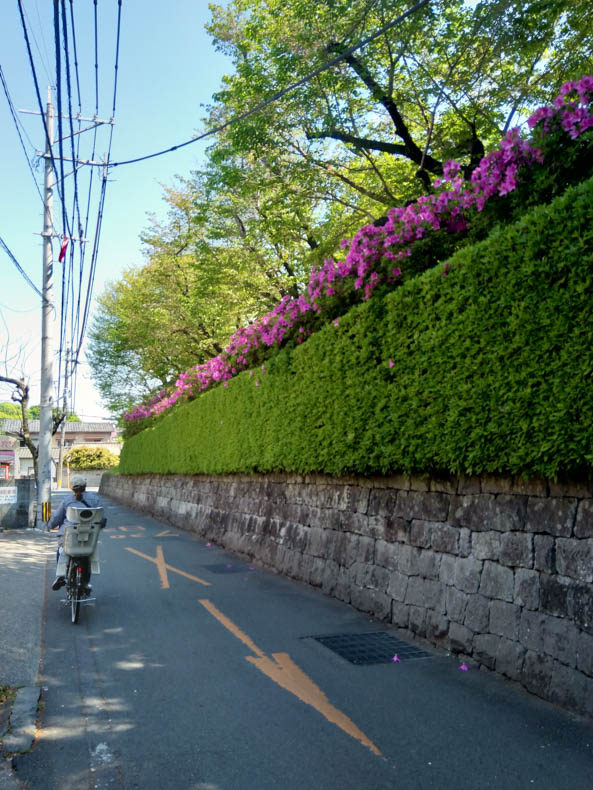
Recently I visited Japan for the first time in more than 16 years. I lived in the southwestern city of Kumamoto from 1998 to 2000, and other than a visit in December of 2002, I’d never been back.
So, on April 16, there I was, finally back in Japan, and I was happy. So happy. I loved having the language back in my ear and in my mouth; I loved being in the land of orderly public transportation, kind strangers, green tea, and mossy tree trunks. I loved living there and I loved being back.
People keep asking, though, so here are some of the differences I noticed.
1. You can pump your own gas now! Twenty years ago, every gas station was full service. Armies of uniformed attendants bowed and waved and shouted a lot and, when you needed to pull back out into the road, stopped traffic for you. Now, at least at the gas stations I saw on my visit to friends in a small town, you can pump your own gas. The gas stations looked so lonely and American.
2. Women mostly go back to work after having a baby. This is according to the wife of a friend of mine; they have a one-year-old and she’s working, and she says most moms do now. This was not true for the women I knew who had children 20 years ago. (Things may have been different in other parts of the country.)
3. Starbucks is everywhere. The very first one got to Kumamoto between my departure in 2000 and my visit two years later, and now they’re everywhere. I never went in, but I did see advertisements for appropriately Japanese-sounding drinks, like the hojicha tea latte.
4. Twenty years ago, when you didn’t want something anymore, you threw it away. Now there are “recycle shops” (Japanese: “risaikuru shoppu”). Friends suggested normal tourism activities for the day I spent with them, but then I found out that thrift stores exist, so instead we spent hours poking through a giant warehouse of used toys, CDs, luxury items, and housewares together.
5. Foreigners are much more common than we used to be. In the late ’90s, when I saw another non-Asian person, I’d give them the “hello there, fellow outsider” nod, and if I saw the same one two or three times, we’d probably stop and chat. Now Japan is allowing more immigration. In my short time in Kumamoto, I saw several foreigners a day, and in Osaka and Tokyo, they (we) were downright numerous.
6. Hello Kitty is not nearly as ubiquitous as she used to be. Sigh.
If I were to stay for another two years, I would probably notice more differences. But, for a two-week trip, it just felt like home.
Photo: Helen Fields
Our son worked in Fukuoka for 2 years (’15-17) and was there during the big Aso earthquake. It occurred between two of our visits and the damage done to Kumamoto was heartbreaking to see. Do you still see some of the damage or have they repaired most of it?
Oh, you’re right – that is a big difference that I forgot! I only saw a little earthquake damage – I didn’t visit the area that was worst hit. That wall in the photo at the top of the post was damaged in places, I saw one lot where I thought the building might have been destroyed in the earthquake, and of course the castle is closed. I couldn’t see the damage to the castle, though, because it’s in a park with a lot of lovely trees, so I could just see that the park is closed.
(A friend on Facebook reminded me about smoking – more common than it is in the U.S. but way, way less common than it was 20 years ago!)
Fascinating that the park is closed because it wasn’t then and you could walk by some of the collapsed retaining walls. We have pictures. But they were still assessing and stabilizing at that point. I imagine now they’ve brought in the heavy equipment and are actually rebuilding. Does make me wonder how many times the castle was damaged by earthquakes over the centuries and how many times it has been repaired and/or rebuilt. Is this an example of the “Grandfather’s Axe” (or Ship of Theseus) conundrum?